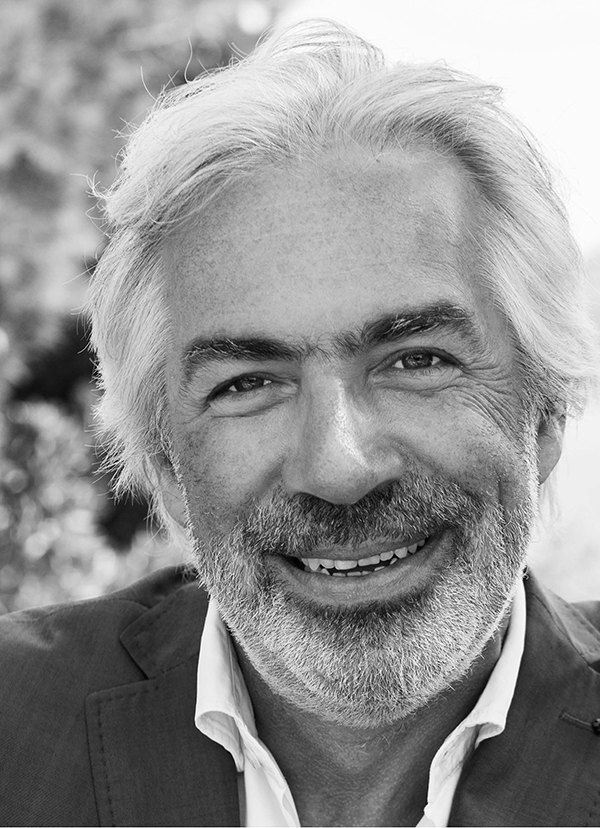
Nicolas Lévy is a physician and researcher in medical genetics. He has been committed to caring for patients with rare diseases for over 30 years. He was head of the Medical Genetics Department at the Timone Hospital (Marseille, France) and head of the Marseille Medical Genetics Research Center (Inserm). Founder and first Director of Fondation maladies rares (Rare Disease Foundation), Dr. Lévy has also forged a number of partnerships between the academic and private sectors, to pool expertise and accelerate therapeutic innovation. Passionately committed to research and driven by the desire to transform his academic work into therapeutic solutions, he has also founded several biotech start-ups. Since 2022, Nicolas Lévy has held the position of chief scientist rare diseases at Servier Group.
Insights: Hello Nicolas, and welcome to the first issue of Insights. Before going into more detail about the research and challenges associated with rare diseases, could you first tell us what rare diseases are — if such a definition exists?
Nicolas Lévy: There are many ways to define rare diseases, including the use of quantitative thresholds. Although, in my opinion, the characterization of a rare disease should not depend on numbers alone. It’s important to remember that there is no consensus on a universal definition of a rare disease. To give you an example, in Europe, we consider a rare disease to be one whose prevalence is less than one case in 2,0001, which means it affects less than one person out of two thousand at any given time. This is the definition accepted and validated by the European Medicines Agency (EMA). In the United States, a disease is said to be rare when it affects less than 200,000 people in the country2.
Overall, the consensus is that rare diseases affect between 3.5% and 5,9% of the world’s population3. In all, more than 9,000 rare diseases are currently registered4, corresponding to 260 to 450 million patients worldwide5.
rare diseases are currently registered, corresponding to 260 to 450 million patients worldwide
Nowadays, rare diseases are increasingly being defined as “ultra-rare” (fewer than 50,000 patients worldwide6), “micro-rare” (fewer than 300 patients), and even “nano-rare” (fewer than 30 patients7). But none of these definitions are official in the eyes of the authorities.
Insights: How are things progressing in terms of new rare disease identification?
N.L.: Well, in my view, there are two main scenarios. The first involves diseases whose clinical characteristics have already been described but for which the cause and biological mechanism have not yet been determined. In the second, it may so happen that when faced with a clinical presentation, the symptoms do not match a disease that has already been described.
And so, a combined approach (clinical, biological, genetic, etc.) can detect a genetic or chromosomal abnormality, or a biological signal and link it simultaneously with the anomaly that causes it.
So, new diseases are being discovered on a fairly regular basis, and there may still be some surprises in store. But overall, I’d say that most of the diseases that fall within this area correspond to a known genetic cause, either one that has already been discovered or is yet to be discovered, for which the underlying condition has been documented. For example, it is possible to establish a direct genetic determination of the disease in 80% of cases10. In addition, when diseases are genetic in origin, they can be diagnosed in just over 60% of cases.
Finally, we have observed the great strides being made in how patient organizations, foundations, and national, European and global networks of experts are organizing. Because of the difficulties identifying patients and their distribution worldwide, enhancing the structure of these networks is a vital step in identifying and making progress in research, to serve patients all over the world.
Insights: Let’s talk now about diagnosis. How can patients be properly diagnosed when there are so many rare, or even micro-rare and ultra-rare, diseases that may elude a proper diagnosis?
N.L.: Things have come a long way, and a lot of progress has been made in terms of diagnosis. As I mentioned earlier, for around 60% of rare diseases, a diagnosis now exists. However, this does not mean that 60% of those affected have been diagnosed! And then there’s the question of organization. Today, when a patient goes to see a doctor at an expert medical center, it’s specifically because he or she has been referred there. The patient already has a hunch that they may have a somewhat complicated, potentially incapacitating disease, which may progress over the course of their life, and yet they want to know the exact diagnosis — and I insist on this last word.
The fact remains, however, that there is still a great deal of misdiagnosis. Patients can wait a very long time — sometimes several years — for a diagnosis that health care professionals have trouble establishing. That said, once a precise diagnosis of a disease has been made, with a genetic or biological mechanism of some kind, quite a bit of ground has already been covered. From there, it’s possible to start pinpointing certain components of the disease mechanism, develop strategies for patient care and then begin to see how a therapeutic approach can be elaborated in order to move closer to creating a molecule that will be more effective and have less side effects.

Insights: You just touched on the subject of therapeutic approaches, but could you also describe the current situation with regard to research in rare diseases?
N.L.: It’s impossible to separate research in rare diseases from research and innovation in the fields of genetics, genomics, and cell biology. I believe that the majority of major technological advances have come from research focusing on genetic diseases and, more broadly, on rare diseases. When we refer to cellular therapies, RNA-based therapies, gene therapies, and antisense oligonucleotides (ASOs), these are all advances linked to two fields: rare diseases and cancer.
There have been many very significant innovations in these areas. And for a discovery to become an innovation, it has to have become standard practice. Such transformations are linked to the potential of the individual compounds. Hopefully, these approaches will become innovations in the near future.

Insights: Speaking of developments, could you give us a few examples of major advances?
N.L.: As far as gene therapy, antisense oligonucleotides, and pharmacological therapies are concerned, there are hundreds of clinical trials in various phases around the world, with some significant developments in progress. For example, one of the most effective, innovative gene therapies is for infantile spinal muscular atrophy, a terrible disease. There are now three innovative treatments for this particular condition, thanks to work carried out in recent years. So, the outlook for patients is significant.
In more general terms, many clinical trials are currently underway for adult and childhood diseases, neurodegenerative diseases, and neurodevelopmental disorders. I would also like to mention the considerable progress being made in genetic, metabolic, and neuromuscular kidney diseases. Most stakeholders in the fields of care, research or therapeutic development agree that we have never been so close to identifying high-potential molecules.
More specifically, advances in molecular genetics and cell biology are, in my view, ones that have made the greatest contribution to advances in therapeutics. As I see it, these are undoubtedly the therapies of tomorrow. Had the genome not been decoded, developing antisense or gene therapies would be impossible today. High-throughput sequencing is also one of the incredible tools of life and health sciences research. It has enabled us to make unprecedented progress, both as a means of exploring disease mechanisms and as a screening tool – that is, for testing compounds with therapeutic potential.
Insights: Does a patient with a rare disease have to live with this “sword of Damocles” for the rest of his or her life? Or, to put it another way, is it possible to cure a rare disease?
N.L.: I think it is possible to cure a rare disease, even though, as I said, it’s a very complex question. It can be very complex to respond without more subtle information if we consider the numbers, the diversity among patients and the complexity of the biological mechanisms at play.
There’s a difference between curing and controlling disease. We need to keep these two notions separate. Earlier, I was talking about the innovative treatments that have been developed recently through advances in research, some of which do indeed provide a cure for certain diseases in certain patients. Other treatments, on the other hand, provide effective disease control over time.
For example, stabilizing a neurodegenerative disease at an early stage, and managing to control it — I think that can be considered a real achievement.
Insights: Many thanks, Nicolas, for your insights and explanations. It’s time to bring our interview to a close with a final question: What do you see as constituting the major challenges that lie ahead in this area?
N.L.: There are both opportunities and challenges. The first challenge relates to the geographical dispersion of patients in very different locations and countries, which can complicate clinical study recruitment, for example. Another challenge is the collection of data, clinical information, and biological samples — what we call natural history studies — over the course of these patients’ lives or care.
of diseases have no treatment
Finally, I believe that when 95%8 of diseases have no treatment in a particular field, then it is bound to hold one of the greatest potentials for medical innovation and research innovation in the life and health sciences. And that makes it one of the greatest opportunities not only for Research players, but also for the whole of society.
Against this backdrop, it is essential to ensure that development procedures are aligned with regulatory agencies, and to reflect collectively on an economic model for market access and pricing for certain medicines. For patients and families, it’s a question of fair access to medicine and care.
[1] Qu’est-ce qu’une Maladie Rare ? – Portail SLA (portail-sla.fr)
[2] FDA : https://www.fda.gov/patients/rare-diseases-fda#:~:text=on%20rare%20diseases%3F-,What%20is%20a%20rare%20disease%3F,drugs%20to%20treat%20rare%20diseases
[3] ncbi : https://www.ncbi.nlm.nih.gov/pmc/articles/PMC9632971/
[4] Adapted from N.Lévy, 2021; Les maladies rares et les espoirs de la médecine du futur. Eds Buchet-Chastel
[5] nbci : https://www.ncbi.nlm.nih.gov/pmc/articles/PMC9632971/
[6] nbci : https://www.ncbi.nlm.nih.gov/pmc/articles/PMC9287598/
[7] Crooke S. Progress in molecular biology and translational science addressing the needs of nano-rare patients – ScienceDirect
[8] https://alliance-maladies-rares.org/nos-combats/
[9] https://www.scienceaujourlejour.fr/pages/maladies-rares/les-notions-de-base.html
[10] Qu’est-ce qu’une Maladie Rare ? – Portail SLA (portail-sla.fr)


